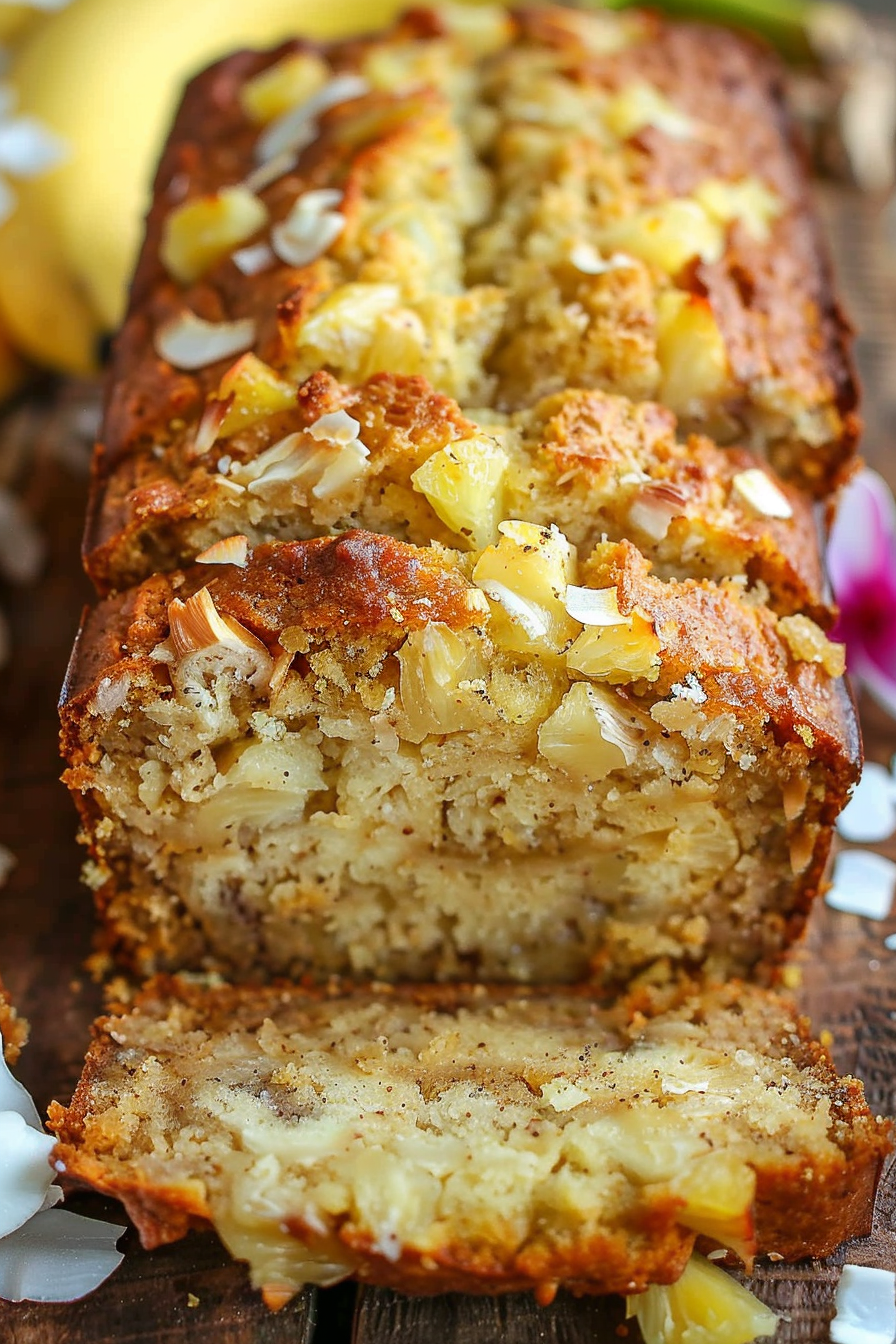Hawaiian bread is beloved for its unique taste, texture, and versatility, standing out among the myriad types of bread available today. Its origins, special ingredients, and distinct preparation methods make it an irreplaceable staple in households and bakeries worldwide. Let’s dive into what makes Hawaiian bread so distinctive and why it has captured the hearts and taste buds of many.
Key Characteristics of Hawaiian Bread
Sweetness and Flavor Profile
Hawaiian bread is renowned for its subtle sweetness and tropical undertones. The addition of pineapple juice and brown sugar lends the bread its characteristic flavor. Unlike traditional bread varieties, Hawaiian bread doesn’t rely solely on the savory taste of yeast but instead balances sweetness with a hint of tang. This unique profile makes it an excellent pairing for both sweet and savory dishes, from huli huli chicken to breakfast sandwiches and desserts like bread pudding. Its tropical flavor ensures a versatile appeal in various cuisines.
Texture and Appearance
Hawaiian bread’s texture is pillowy, soft, and slightly chewy. The bread develops a signature golden brown crust during baking, thanks to the addition of melted butter and brown sugar in the dough or as a topping. The tender crumb structure comes from the perfect balance of bread flour, all-purpose flour, and sometimes even potato flakes to enhance moisture retention. The use of warm milk and careful handling creates irresistibly fluffy rolls perfect for any occasion.
Sweetness and Flavor Profile
Hawaiian bread is renowned for its subtle sweetness and tropical undertones. The addition of pineapple juice and brown sugar lends the bread its characteristic flavor. Unlike traditional bread varieties, Hawaiian bread doesn’t rely solely on the savory taste of yeast but instead balances sweetness with a hint of tang. This unique profile makes it an excellent pairing for both sweet and savory dishes, from huli huli chicken to breakfast sandwiches and desserts like bread pudding.
Texture and Appearance
Hawaiian bread’s texture is pillowy, soft, and slightly chewy. The bread develops a signature golden brown crust during baking, thanks to the addition of melted butter and brown sugar in the dough or as a topping. The tender crumb structure comes from the perfect balance of bread flour, all-purpose flour, and sometimes even potato flakes to enhance moisture retention.
Ingredients that Define Hawaiian Bread
Bread Flour and Its Role
The choice of flour plays a significant role in Hawaiian bread’s unique texture. While some recipes incorporate all-purpose flour, the inclusion of bread flour provides the necessary protein for gluten development, resulting in a sturdy yet soft dough.
Unique Flavor Enhancers
Pineapple juice, brown sugar, and vanilla extract are standout ingredients that define the tropical and sweet flavor of Hawaiian bread. These components differentiate it from other sweet breads, giving it a unique identity. Additionally, unsalted butter, instant yeast, and a well-prepared yeast mixture are essential for achieving the desired flavor and rise. The addition of a teaspoon ground ginger and precise handling of wet ingredients further elevate the bread’s flavor profile.
Toppings and Additives
A light brush of melted butter before baking ensures a glossy, golden brown finish. Optional toppings like cinnamon sugar or cheese can further enhance its appeal. For those with dietary restrictions, ingredients like gluten-free flour or alternative sweeteners can be used to create gluten-free Hawaiian bread options without sacrificing flavor.
Bread Flour and Its Role
The choice of flour plays a significant role in Hawaiian bread’s unique texture. While some recipes incorporate all-purpose flour, the inclusion of bread flour provides the necessary protein for gluten development, resulting in a sturdy yet soft dough.
Unique Flavor Enhancers
Pineapple juice, brown sugar, and vanilla extract are standout ingredients that define the tropical and sweet flavor of Hawaiian bread. These components differentiate it from other sweet breads, giving it a unique identity. Additionally, unsalted butter and instant yeast are essential for achieving the desired flavor and rise.
Toppings and Additives
A light brush of melted butter before baking ensures a glossy, golden brown finish. Optional toppings like cinnamon sugar or cheese can further enhance its appeal. For those with dietary restrictions, ingredients like gluten-free flour or alternative sweeteners can be used to create gluten-free Hawaiian bread options without sacrificing flavor.
Variations of Hawaiian Bread
Traditional Hawaiian Rolls
The most popular version of Hawaiian bread is the classic dinner roll, often referred to as Hawaiian rolls. These small, fluffy rolls are perfect for sliders, mini sandwiches, or as an accompaniment to soups and stews. Their soft, sweet flavor profile is a crowd favorite.
Sweet Bread Variations
Some recipes add creative twists, such as cinnamon swirls, chocolate chips, or even fresh pineapple chunks, to create exciting flavor combinations. These variations make Hawaiian bread a versatile base for experimenting with different tastes.
Gluten-Free Hawaiian Bread Options
For gluten-sensitive individuals, there are gluten-free recipes that replicate the softness and sweetness of traditional Hawaiian bread. By substituting regular flour with gluten-free flour blends, bakers can achieve a similar texture and flavor while accommodating dietary needs.
Preparation Techniques
The Importance of Kneading
Proper kneading is crucial to developing the gluten structure needed for Hawaiian bread’s soft texture. Using a dough hook attachment on a stand mixer or manually kneading on a floured surface ensures a smooth, elastic dough.
Rising and Proofing Processes
The secret to Hawaiian bread’s fluffiness lies in its rise time. After the initial mix, the dough is left to rise in a greased bowl, covered with a clean kitchen towel or plastic wrap. This process allows the yeast to ferment, creating air pockets that result in a light texture.
Shaping the Dough
Once risen, the dough is divided into equal portions and shaped into rolls or loaves. Ensuring uniformity in size helps achieve consistent baking results. The shaped dough is placed in baking pans, such as a 9×13-inch baking pan for rolls or 9×5-inch loaf pans for bread loaves.
Comparison with Other Types of Bread
Differences from Regular White Bread
Unlike regular white bread, Hawaiian bread boasts a sweeter taste and softer texture. The inclusion of tropical ingredients like pineapple juice and a higher sugar content sets it apart. While white bread primarily serves as a neutral base, Hawaiian bread’s inherent flavor makes it a star in its own right.
Contrast with Sweet Breads from Other Cultures
Hawaiian bread is often compared to other sweet breads like brioche or challah, yet it remains unique due to its tropical flavor. While brioche incorporates more butter and eggs, and challah has a denser texture, Hawaiian bread strikes a perfect balance between lightness and richness.
Storing and Freezing Hawaiian Bread
Best Practices for Freshness
To keep Hawaiian bread fresh, store it in an airtight container or wrap it tightly in plastic wrap. This prevents it from drying out and maintains its softness. A cool, dry storage environment is ideal for prolonging its shelf life.
Tips for Freezing and Thawing
Hawaiian bread freezes exceptionally well. Wrap the bread in plastic wrap and place it in a freezer-safe bag or container to preserve its freshness. When ready to use, transfer the bread from the freezer and allow it to thaw at room temperature. For a warm, freshly baked feel, reheat it in the oven briefly. Mastering the art of freezing and thawing ensures your Hawaiian bread remains as delightful as the day it was baked.
Best Practices for Freshness
To keep Hawaiian bread fresh, store it in an airtight container or wrap it tightly in plastic wrap. This prevents it from drying out and maintains its softness.
Tips for Freezing and Thawing
Hawaiian bread freezes exceptionally well. Wrap the bread in plastic wrap and place it in a freezer-safe bag. When ready to use, thaw at room temperature and warm in an oven for a freshly baked feel.
Pairing Hawaiian Bread with Foods
Ideal Accompaniments
Hawaiian bread pairs beautifully with dishes like huli huli chicken, grilled pork, and dressed arugula salads. Its sweetness balances savory and spicy flavors, making it a versatile addition to any meal.
Suggested Dishes for Serving
Use Hawaiian bread to create mini sandwiches, bahn mi sliders, or breakfast sandwiches. It also serves as a delightful base for desserts like bread pudding or French toast.
The Role of Popular Brands
Overview of King’s Hawaiian
King’s Hawaiian is the most well-known brand producing Hawaiian bread. Their products are celebrated for their consistency and authentic flavor, making them a household staple. The company’s bread has set a benchmark for what consumers expect in terms of quality and taste in the market for sweet breads.
Brand Differences vs. Homemade
While store-bought Hawaiian bread offers convenience, homemade versions allow customization and fresher taste. Baking this bread at home lets you experiment with ingredients and tailor the recipe to personal preferences. Using items like a bread box for storage or baking in bread company-style pans can help replicate the professional touch of popular brands. Additionally, exploring various products available in the market can inspire new takes on classic Hawaiian bread recipes.
Overview of King’s Hawaiian
King’s Hawaiian is the most well-known brand producing Hawaiian bread. Their products are celebrated for their consistency and authentic flavor, making them a household staple.
Brand Differences vs. Homemade
While store-bought Hawaiian bread offers convenience, homemade versions allow customization and fresher taste. Baking at home lets you experiment with ingredients and tailor the recipe to personal preferences.
Hawaiian bread’s unique characteristics, from its tropical sweetness to its fluffy texture, make it a standout in the world of bread. Whether enjoyed fresh, as part of a meal, or as a base for creative recipes, its versatility and distinctive flavor continue to delight food enthusiasts worldwide. So, next time you take a bite of this delicious bread, savor the craftsmanship and tropical essence that make Hawaiian bread truly special.

